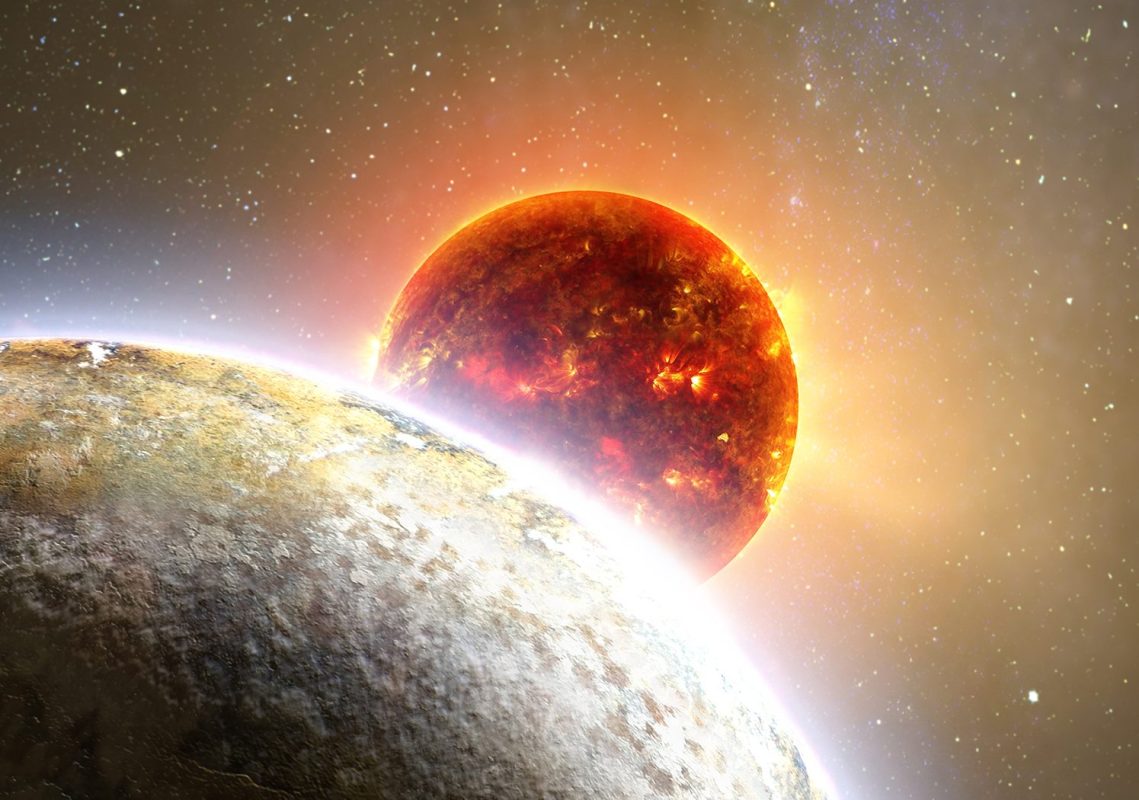When Dana Berry was finishing up graduate school in 1987, he already had some experience making computer graphics for businesses. So when he saw a job at the Space Telescope Science Institute for someone to make science visualizations, he jumped at the opportunity, even though he wasn’t necessarily qualified.
“I realized they needed someone to give them a vision,” he told RealClearLife. Berry had grown up interested in Carl Sagan’s work, and he took astronomy classes throughout school. So he applied and pulled off a coup, as he says. He was not fluent in mathematics or science, but he had an intuitive grasp of the subject matter.
“What attracted me to it is something that has kind of always propelled me through it,” he said. “Astronomy is the one science that answers the big questions, almost to the point of the meaning of life.”
This idea, that astronomy could teach humans about who we are, where we are from, where we our going, or even our fate, sustains Berry to this day. He is one of those people whose work you have probably seen, but didn’t know it. That’s because this job that Berry talked himself into ended up leading to a career of colorizing actual telescope data — including from NASA’s Hubble Telescope — and creating artistic impressions of space.
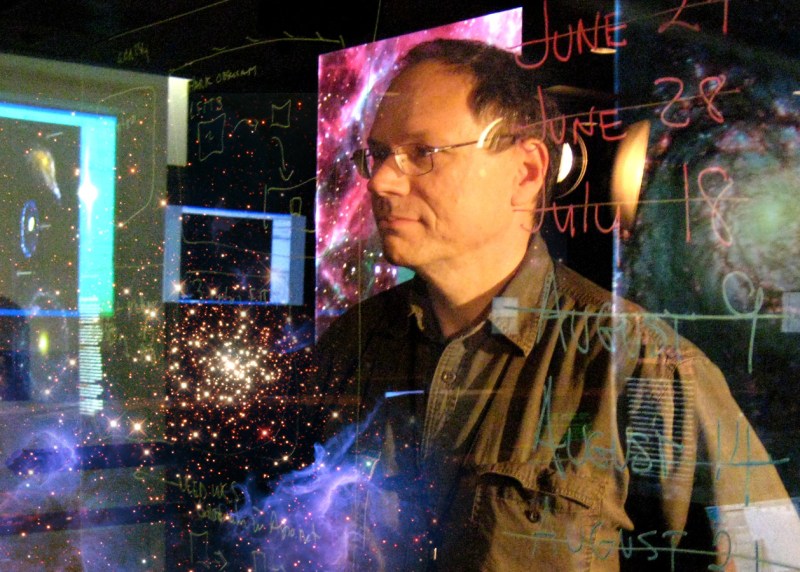
Publicity still for “Hubble’s Amazing Universe,” a show I produced and directed for the National Geographic Channel about the science of Hubble. The image is shot by Chris Barron, who was the cinematographer for the show, in the control room at the Space Telescope Science Institute, the place where my career began. (Photo by Chris Barron)
The Hubble faced issues when it first launched in 1990. It had cost more than $2 billion to create, and it was the next big project after the Challenger, which exploded over onlookers in Florida and killed everyone on board in 1986. On top of that, Hubble had a problem with its mirror. It was quickly discovered, Berry told RCL, but the telescope became the butt of jokes around the country, which was “really painful at the time.”
Berry said that one of the most gratifying feelings of his life was “when the Hubble was fixed.” Knowing that the telescope was going to “proceed with the world class science that it was meant to — and in fact went on to — produce” gave Berry the thrill of victory.
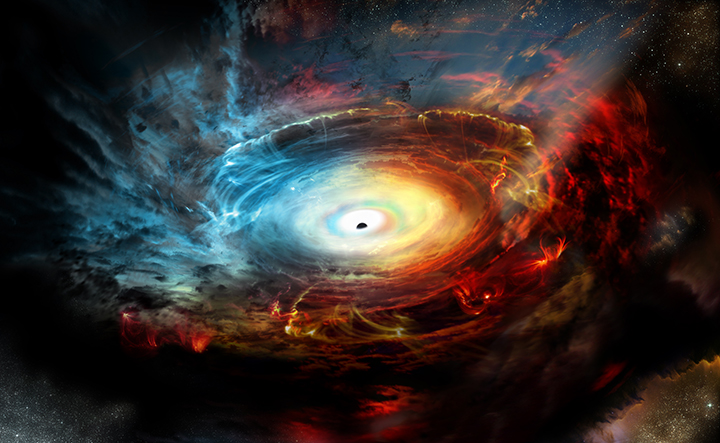
A view of the super massive black hole at the core of our Milky Way, a black hole so large and powerful, its event horizon is larger than our whole solar system, surrounded by a disk of gasses swirling around so fast, the very light emitted by the disk exhibits the light-equivalent of a Doppler shift: the side of the disk spinning toward the viewer is literally blue shifted, while the side receding away is red shifted. It is a region of our galaxy of staggering violence on unimaginable scales. (Photo by Dana Berry)
Owner
Once images from Hubble started coming in, Berry and everyone else at the Institute tried to figure out the best way to utilize them. The first image Berry colorized was of a supernova exploding. He told Smithsonian Magazine that he “handled the image as gingerly as he could, as if the scientific data was holy in a way.”
“Sharing the wonders of discovery turned out to be not only a fun and edifying and altruistic thing that NASA was doing, it also turned out to be a pragmatic one,” Berry told RCL. There was more political support for science because you “brought people along for the ride,” he continued.
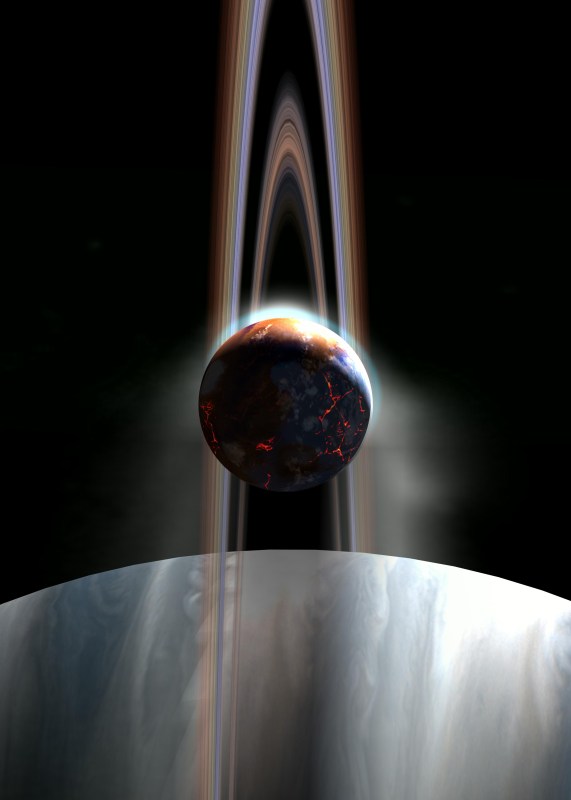
An earthlike moon in orbit around a ringed jovian exoplanet is on the verge of breaking up from tidal stress caused by its host planet. This would be a geologically raucous world, unlike Pandora, a world this art might have inspired. (Photo by Dana Berry)
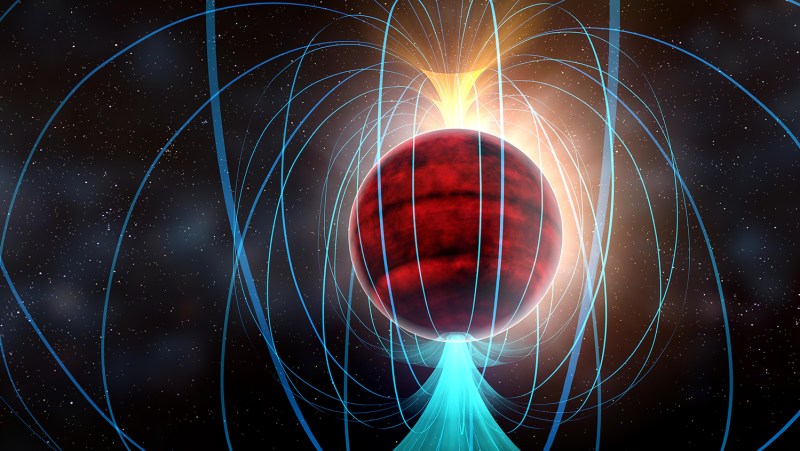
A brown dwarf star is the smallest a star can be and still be classified as a star. This image commissioned by the National Radio Astronomical Observatory features unusually powerful magnetic field lines detected around the dwarf star, TVLM 513-46546, (35 light-years from Earth in the constellation Boötes) by ALMA, the Atacama Large Milimeter Array in Chile. (Photo by Dana Berry)
From the Space Telescope Science Institute, Berry moved to a job at Tufts University and then NASA’s Chandra X-Ray Observatory. He worked as lead animator at Wilkinson Microwave Anisotropy Probe, and even got to work on the 25th-anniversary editor of Sagan’s Cosmos, the documentary he admired when he was growing up in South Carolina. He told Smithsonian that working on Cosmos felt like he had “basically been asked to clean up the Mona Lisa.”
Berry’s current work now include more artistic impressions of space. Among many other jobs and projects, he has also had six National Geographic covers and is currently working on a new project for them as well.
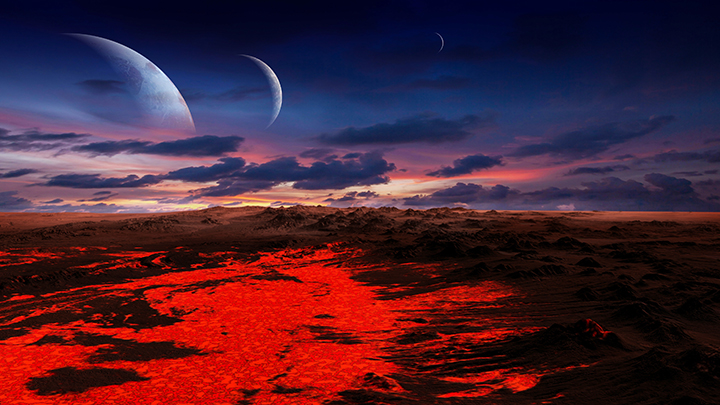
This is a view of a primordial Earth early in the history of our solar system, a time when many new-born terrestrial planets inhabited the inner solar system, a region now inhabited only be Earth, Venus, Mars and Mercury. (Photo by Dana Berry)
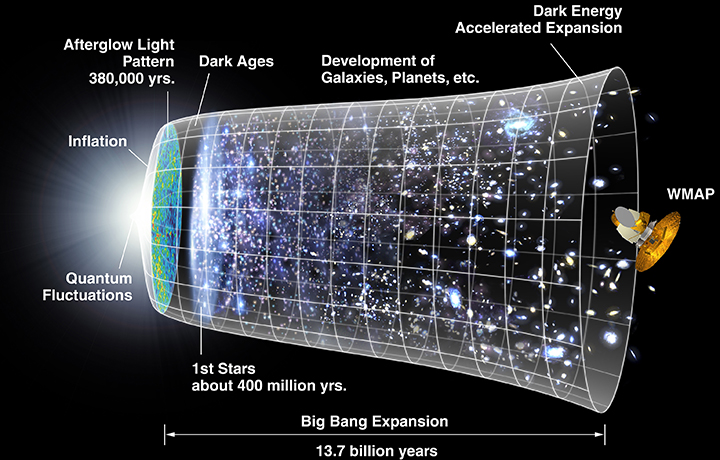
All of cosmic history is captured in this grand, wine-glass-shaped chart originally produced for NASA’s WMAP (Wilkinson Microwave Anisotropy Probe) Mission. Featured on the left is the Big Bang, the primordial event in which the Universe is born, its hyper inflationary period whereupon the Universe expanded at a rate much faster than it does today. Inside the wine-glass shape we see galaxies and stars form, and leading from the past on the left to the present on the right. (Photo by Dana Berry)
Looking back at his career thus far, Berry told RCL that it is interesting to take measure of how astronomy has grown, and a lot of what we’ve discovered has been because of Hubble.
“The thing about astronomy was that, we didn’t even know what some of the questions to ask were and now we do,” he said during a phone interview. “That has all changed in the course of my lifetime.”
Check out some more of Berry’s work below.

LADEE was designed for a dramatic ending, that is to crash into the lunar surface and kick up some dust, right on the limb of the Moon so that the dust plume could be observed from Earth. (Photo by Dana Berry)
SkyWorks

LADEE is NASA’s “Lunar Atmospheric Dust Environment Explorer.” The Moon actually has an ultra thin atmosphere that fills with electrostatic dust on the daylight side. (Photo by Dana Berry)
SkyWorks
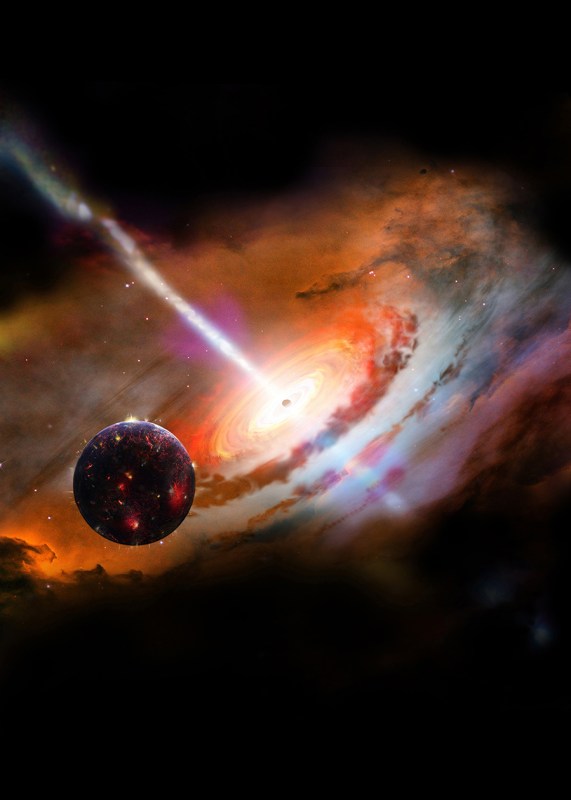
A planemo–a “planetary mass object”–is a world adrift in space, kicked out of its home solar system. Here, a planemo drifts into our view of a super massive black hole, an object so massive that it can only reside in the central core of a galaxy. (Photo by Dana Berry)
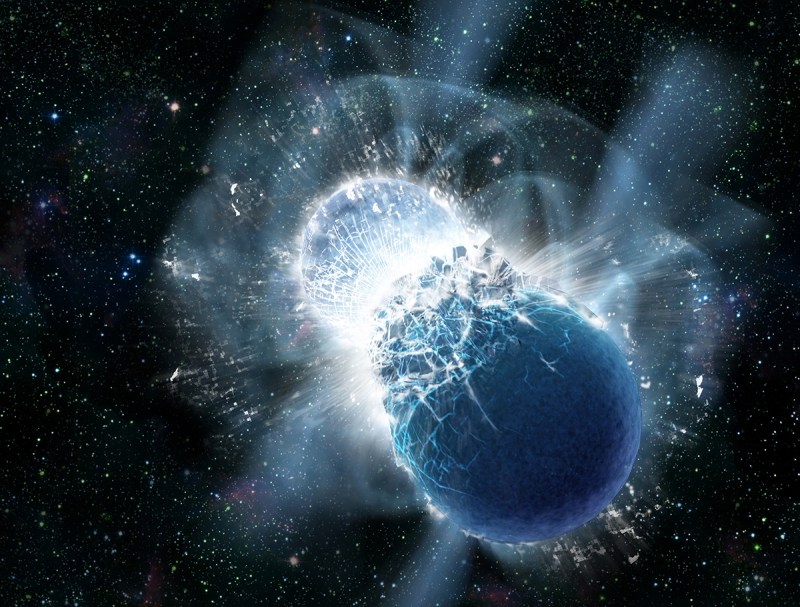
Neutron stars are the burnt out cores of red giant stars. Unlike the Sun, which has a gaseous surface, neutron stars have a hard shell. Here, two neutron stars slam together, shattering their outer shells in an event that can produced detectable gravity waves. (Photo by Dana Berry)
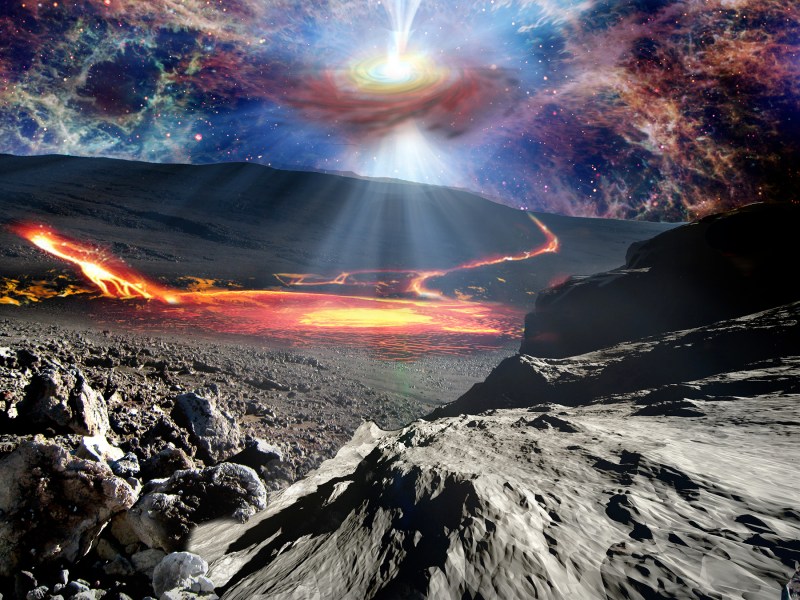
A star that goes supernova, but isn’t massive enough to produce a black hole, will leave a rapidly spinning neutron star as its grave marker. Some of the original material blasted from that star can fall back toward the star into a disk from which a planet might arise. Here, we see the landscape of such a planet, with a pulsar strobing the landscape like a giant disco ball in the sky, and extraordinary locale not conducive for life. (Photo by Dana Berry)
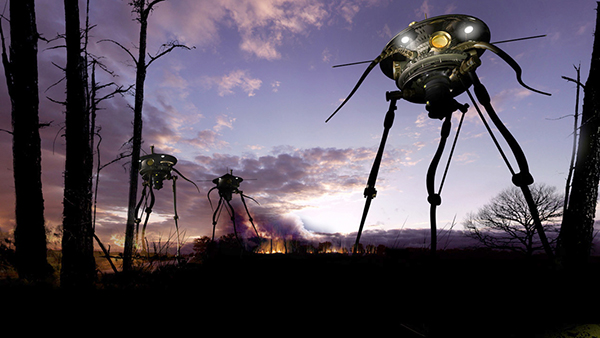
The Martians are coming! This is a visualization of the Martian invasion, with the tripod war machines following a steampunk design, that appears in my companion book to the Discovery Channel series, “Race to Mars.” (Photo by Dana Berry)
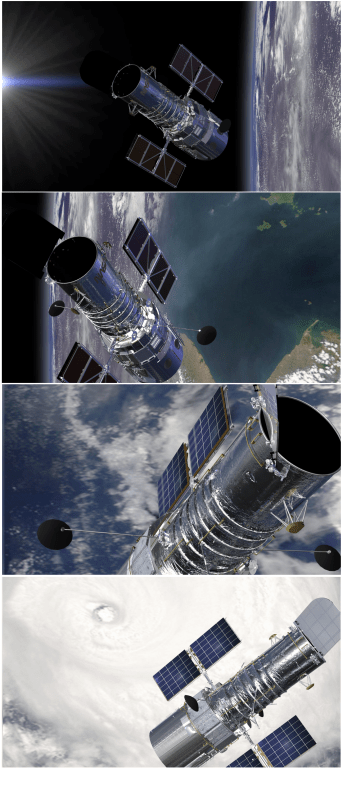
The most famous telescope in the world never touches the ground. Hubble Space Telescope, shown passing over the Isthmus of Panama, in this set of images made in preparation for Hubble’s final servicing mission. (Photo by Dana Berry)

A potentially habitable, rocky planet 1.2 times the mass of Earth shown here orbiting a red dwarf star called “GJ 1132b.” This planet was discovered some 39 light-years away, which is, in astronomical terms, a nearby neighbor, and a distance close enough to put this planet on the target list for the upcoming James Webb Space Telescope mission, due to be launched in 2021. (Photo by Dana Berry)
SkyWorks
This article was featured in the InsideHook newsletter. Sign up now.














